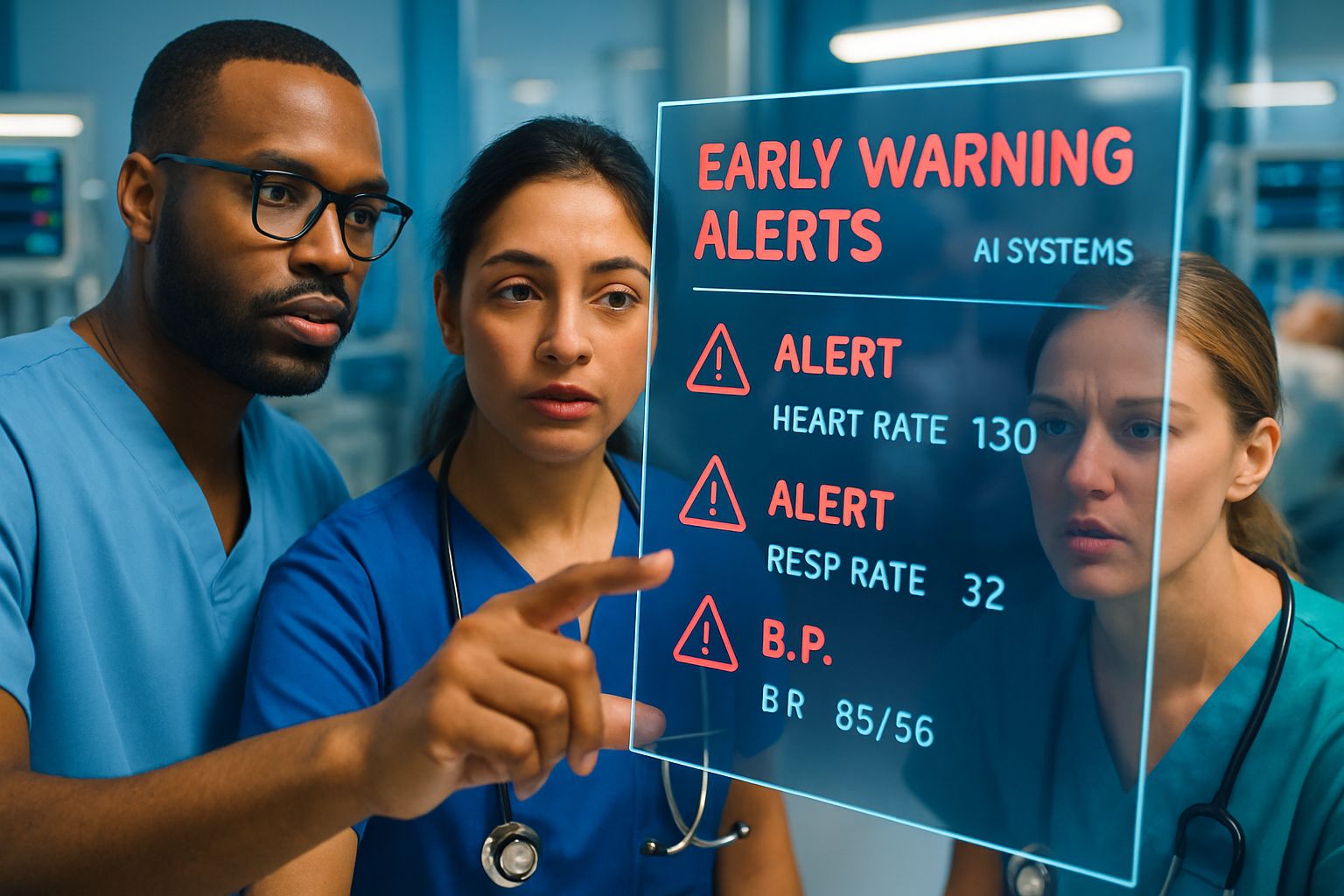
AI CERTS
4 hours ago
Healthcare AI Predicts ICU Crises Six Hours Early
Healthcare AI Saves Lives
TREWS, the best-known system, monitors nearly 600,000 encounters across five hospitals. Meanwhile, it flags severe sepsis about 5.7 hours before standard practice. Johns Hopkins researchers reported an 18% relative mortality drop when clinicians responded within three hours. Additionally, Duke’s Sepsis Watch shows 25-31% reductions after local deployment. These findings resonate because earlier therapy drives outcomes. Consequently, healthcare leaders view algorithmic vigilance as a high-impact safety initiative. Healthcare AI promises scale, consistency, and 24/7 coverage that manual observation lacks.

Overall, these studies confirm survival benefits. However, associations rely on observational designs, not randomized trials. Nevertheless, clinicians value any method that shaves hours off recognition. These successes establish proof that Healthcare AI can translate predictive power into lives saved. Importantly, further trials will strengthen causal claims. These positive signals set the stage for wider adoption.
These data illustrate tangible patient gains. Therefore, the discussion now shifts to broader technical progress.
ICU Alerting Rapid Advances
Recent years brought a surge of new architectures. For example, transformer time-series models achieved AUC scores up to 0.92 by day five. Furthermore, vendors of wearable sensors claim detection windows exceeding 12 hours on wards. In contrast, legacy vital-sign charts update every four hours, leaving gaps. Moreover, remote dashboards let smaller teams oversee multiple sites simultaneously. Consequently, capacity constraints ease, and escalation happens sooner.
Key developments include:
- Prospective multi-site validations across community and academic centers
- Interpretable heatmaps that highlight driving features for each alert
- FHIR-based integration that streams data directly from electronic records
- Edge analytics embedded in bedside monitors for real-time feedback
Collectively, these innovations shorten lead time, boost trust, and embed insights at the point of care. Subsequently, attention turns to concrete outcome statistics.
Advances improve technical accuracy. However, impact still hinges on adoption, which the next section explores.
Sepsis Results In Depth
Peer-reviewed numbers provide hard evidence. Nature Medicine published the largest dataset so far.
Major findings include:
- 5.7-hour average lead time for severe sepsis
- 3.3% absolute mortality reduction after prompt confirmation
- 89% clinician evaluation rate for generated alerts
- Shorter time-to-antibiotics and reduced length of stay
Furthermore, CDC estimates 1.7 million sepsis cases yearly in the United States. Therefore, even a modest 3% absolute improvement could translate into thousands of saved lives. Additionally, Duke reports sustained benefit three years post-implementation, suggesting durability. Patient Monitoring workflows adjust, yet teams report minimal alert fatigue when specificity remains high. Consequently, stakeholders recognise demonstrable value.
These statistics highlight meaningful clinical impact. Nevertheless, understanding the algorithms behind them remains essential.
Technology Behind Early Warnings
Modern models ingest vitals, labs, clinician notes, and device streams every few minutes. Meanwhile, ensemble techniques fuse gradient boosting with deep sequences for robustness. Moreover, transformers excel at capturing long-range dependencies across time. Feature attribution tools, such as SHAP, display why each alert fired. Consequently, transparency counters distrust.
Patient Monitoring requires sharp sensitivity without flooding staff with false positives. Therefore, developers tune thresholds using local retrospective data. Additionally, silent-mode pilots measure precision before go-live. In contrast, earlier rule-based scores lacked such adaptive calibration.
Professionals can deepen expertise with the AI Healthcare Specialist™ certification. Moreover, the program covers data pipelines, bias audits, and deployment governance.
Technical design determines alert utility. However, workflow integration ultimately drives real-world benefit, as next discussed.
Implementation Lessons And Learned
Successful sites follow a structured playbook. First, they validate models against historical records to set baseline performance. Subsequently, they launch in shadow mode to observe alert frequency. Furthermore, designated clinicians triage every alert within minutes, ensuring accountability. Moreover, governance boards track time-to-antibiotics, length of stay, and unintended antibiotic overuse.
Key checklist items appear below:
- Embed alerts inside existing EHR task lists
- Define escalation paths and response timers
- Monitor Critical Care metrics weekly for drift
- Retrain models when population or documentation changes
- Educate staff to avoid automation bias and over-trust
Additionally, hospitals address cybersecurity, HIPAA, and device connectivity. In contrast, deployments ignoring these basics face low adoption and alert fatigue. Consequently, structured change management proves as vital as the algorithm itself.
These implementation insights emphasise socio-technical factors. Therefore, adopters must also navigate external oversight.
Regulatory And Ethical Hurdles
Regulators watch algorithmic decision-making closely. The FDA now offers breakthrough designation for high-risk Clinical Decision Support. However, approval often falls on manufacturers proving safety and effectiveness. Meanwhile, CMS bundles like SEP-1 push hospitals to measure sepsis care times. Additionally, professional societies demand transparency, bias audits, and post-market surveillance.
Ethical questions surface around data privacy, equity, and over-treatment. Moreover, false positives could raise unnecessary antibiotic use, fostering resistance. Therefore, institutions establish oversight committees with ethicists, data scientists, and frontline nurses. Consequently, continuous monitoring of demographic performance gaps becomes routine.
These hurdles highlight necessary guardrails. Nevertheless, clear rules also build public trust, which fuels broader rollout.
Future Outlook And Recommendations
Industry momentum appears unstoppable. Transformer architectures will likely push predictive horizons further. Additionally, combining bedside devices with cloud analytics promises seamless Critical Care coverage. Moreover, multi-site randomized trials are underway, aiming to close causal gaps. Meanwhile, federated learning could address generalizability without moving sensitive data.
For providers considering adoption, experts recommend starting small, measuring often, and iterating quickly. Furthermore, aligning incentives with quality programs accelerates stakeholder buy-in. Healthcare AI will continue permeating Patient Monitoring, radiology, and operations, creating integrated safety nets.
These trends forecast exponential capability growth. Consequently, leaders should prepare now to harness forthcoming advancements.
Healthcare AI now stands at an inflection point. Earlier alerts, validated results, and mature governance combine to make critical care safer. Nevertheless, rigorous trials, ethical vigilance, and clinician engagement remain essential. Therefore, readers should explore certification paths and stay updated on forthcoming studies.



